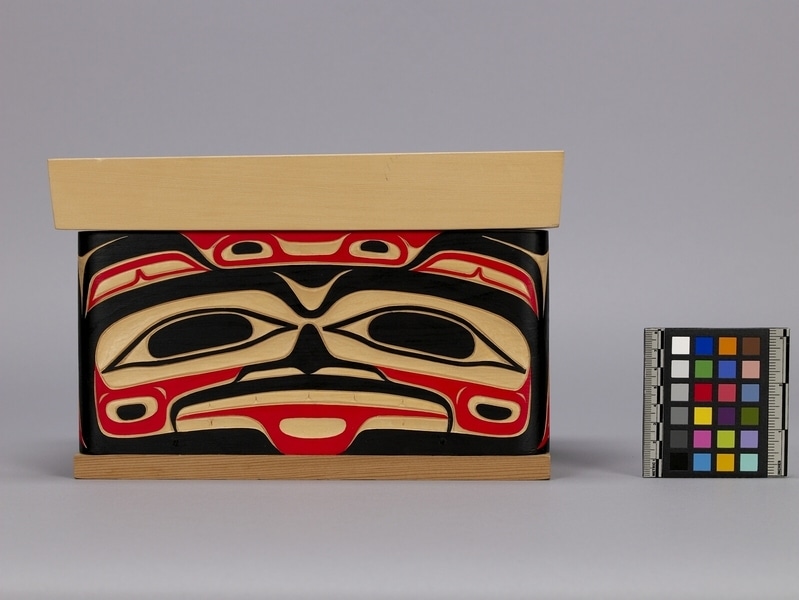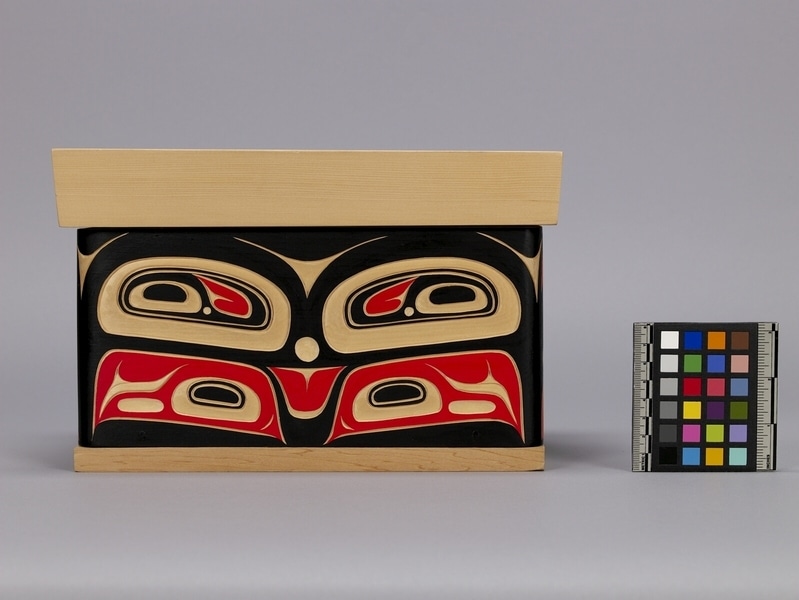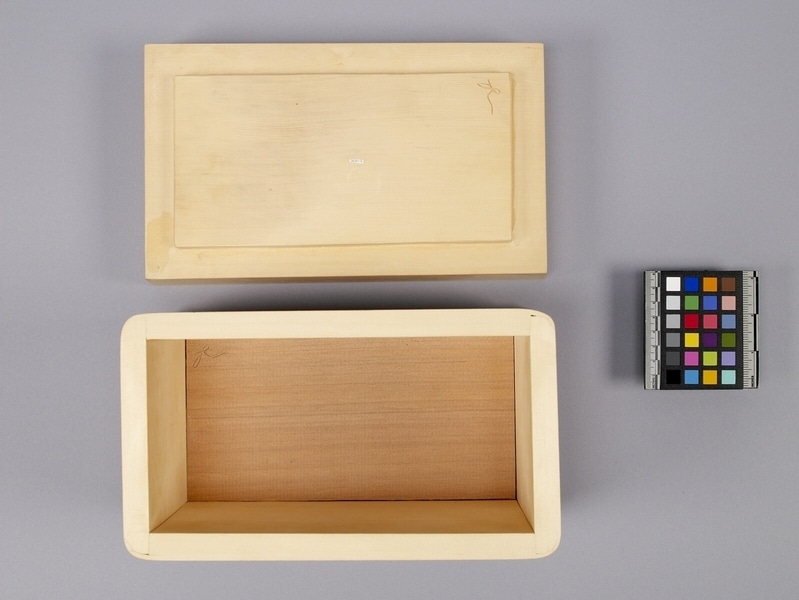Bentwood Box Item Number: 2629/1 a-b from the MOA: University of British Columbia




Description
Small bentwood box with yellow cedar lid and walls and a red cedar bottom. Sides are carved and painted, in the image of a bear. Artist initials inside box and lid.
Narrative
This bentwood box was made for, and used, to hold the cremated remains of the Haida artist Francis Williams at his memorial. The ashes were held in another container placed within the box. After the memorial, the box was used to carry the ashes back to Haida Gwaii where the ashes were returned to the sea with some blue trade beads.
Specific Techniques
Bentwood, or kerfed-corner, containers are constructed by a process unique to the Northwest Coast Aboriginal peoples. The carver begins with a single straight-grained plank of red cedar, or sometimes yellow cedar, spruce, or yew. The surface of the plank is finished with chisels, adzes, and knives; in earlier times, it was smoothed further with sandstone or dried sharkskin. Then three parallel kerfs, or grooves, are carved out at measured points across the width of the board, at right angles to the long edge. The kerfs, which will become three corners of the box, allow the board to be steamed until the wood fibres are softened, and then carefully bent to form a box with symmetrical sides. The final corner, as well as a fitted base, are joined and fastened with pegs (through drilled holes) or laced with spruce root or twisted cedar withes (branches). Storage boxes also have fitted lids of cedar, hollowed from the inside. Finally, painted compositions may be applied to the completed box and shallow carving added to bring the forms into relief. A well-made bentwood box is watertight. Historically, most boxes were used to store preserved foods and material goods; plain cooking boxes could be used to steam or boil food by adding water and heated stones.
Item History
- Made by Larry Rosso (Maker) in British Columbia, Canada during 2003
- Owned by Amanda White before July 28, 2004
- Received from Amanda White (Donor) on July 28, 2004
What
- Name
- Bentwood Box
- Identification Number
- 2629/1 a-b
- Type of Item
- box
- Material
- yellow cedar wood, paint and cedar wood
- Part A
- height 13.6 cm, width 26.0 cm, depth 14.5 cm
- Part B
- height 5.4 cm, width 27.6 cm, depth 16.6 cm
- Overall
- height 18.0 cm, width 26.0 cm, depth 14.5 cm
Who
- Culture
- Haida
- Creator
- Larry Rosso (Maker)
- Previous Owner
- Amanda White
- Received from
- Amanda White (Donor)
Where
- Holding Institution
- MOA: University of British Columbia
- Made in
- British Columbia, Canada
When
- Creation Date
- during 2003
- Ownership Date
- before July 28, 2004
- Acquisition Date
- on July 28, 2004
Other
- Condition
- excellent
- Accession Number
- 2629/0001 a-b